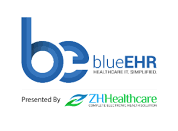 This year at HIMSS in Las Vegas there was no shortage of talk about the “lack of usability” in EHRs. In the final HIMSS16 show daily (Thursday March 3, 2016) there were four articles (“When EHRs cause Harm,” “5 UX steps to Healthy Clinical apps,” “Nurse: We face severe IT usability problems,” and “The leading health IT issues? Poor usability and missing safeguards”) that addressed some aspect of EHR usability...Over the past few years we’ve worked with a number of EHR vendors on improving the usability of their solutions. We’ve noticed a number of items that seem to common to many of the systems, and this list contains some of the most common and highest priority usability issues that should be avoided in your EHR designs.
This year at HIMSS in Las Vegas there was no shortage of talk about the “lack of usability” in EHRs. In the final HIMSS16 show daily (Thursday March 3, 2016) there were four articles (“When EHRs cause Harm,” “5 UX steps to Healthy Clinical apps,” “Nurse: We face severe IT usability problems,” and “The leading health IT issues? Poor usability and missing safeguards”) that addressed some aspect of EHR usability...Over the past few years we’ve worked with a number of EHR vendors on improving the usability of their solutions. We’ve noticed a number of items that seem to common to many of the systems, and this list contains some of the most common and highest priority usability issues that should be avoided in your EHR designs.
EHR usability
See the following -
Open Health News Continues To Grow-Visitors Cross the 375,000 Mark
We have been very busy lately and did not have time this year to write a recap of major events related to our news web site. Well, a bit late, we start here with a review of our traffic figures. Traffic to the website continues to grow and we are now approaching 20,000 unique visitors per month. As the table shows below, the total number of unique visitors since we launched the site nearly four years ago has surpassed 375,000 and the total number of Page Views has broken the 8 million mark.
- The Future Is Open
- Login to post comments
OpenEMR Community Releases Major Upgrade to their Open Source EHR
 OpenEMR, the most popular open source electronic health records (EHR) and medical practice management solution, has announced today that OpenEMR version 5.0.1 has been released. A community of more than 50 OpenEMR contributors produced a staggering amount of new features and improvements for OpenEMR 5.0.1. "The amount of new features and improvements in this new release of OpenEMR is simply astounding and showcases the strengths, diversity, talents, commitment, productivity, and good will of the thriving OpenEMR community," said Dr. Brady Miller, an OpenEMR project administrator, and physician.
OpenEMR, the most popular open source electronic health records (EHR) and medical practice management solution, has announced today that OpenEMR version 5.0.1 has been released. A community of more than 50 OpenEMR contributors produced a staggering amount of new features and improvements for OpenEMR 5.0.1. "The amount of new features and improvements in this new release of OpenEMR is simply astounding and showcases the strengths, diversity, talents, commitment, productivity, and good will of the thriving OpenEMR community," said Dr. Brady Miller, an OpenEMR project administrator, and physician.
- Login to post comments
OSEHRA 2014: Modernizing the VistA GUI
 As we approach the 2014 OSEHRA EHR Summit, the topics of EHR Usability and EHR web enablement have become major points of discussion. This article is a quick attempt to summarize one of the key developments in this area. Sidney Tarason from Astute Semantics has produced groundbreaking prototypes for VistA that could shape the modernization effort moving forward for not just VistA, but for all EHRs based on the polymorphic MUMPS database (about 95% of all electronic health record (EHR) systems in the United States). Read More »
As we approach the 2014 OSEHRA EHR Summit, the topics of EHR Usability and EHR web enablement have become major points of discussion. This article is a quick attempt to summarize one of the key developments in this area. Sidney Tarason from Astute Semantics has produced groundbreaking prototypes for VistA that could shape the modernization effort moving forward for not just VistA, but for all EHRs based on the polymorphic MUMPS database (about 95% of all electronic health record (EHR) systems in the United States). Read More »
OSEHRA Proposes Visionary Open Digital Health Platform for the VA
 The Veterans Health Administration (VHA) recently released a Request for Information (RFI) calling for advice on how to build an open, "interoperable digital health platform." The RFI received 40 responses. Only one of those was publicly released, the one from OSEHRA. That the open source EHR organization was the only one that has been open in their submissions, by itself, tells a story. There are some in the VA proposing replacing the open source VistA EHR with a "Commercial" lock-in product. Proprietary EHR vendors are circling the VA like sharks smelling blood in the water, and they don't want the public to know what they are up to...The OSEHRA response below. Note that several dozen OSEHRA member companies and associates participated in drafting this response.
The Veterans Health Administration (VHA) recently released a Request for Information (RFI) calling for advice on how to build an open, "interoperable digital health platform." The RFI received 40 responses. Only one of those was publicly released, the one from OSEHRA. That the open source EHR organization was the only one that has been open in their submissions, by itself, tells a story. There are some in the VA proposing replacing the open source VistA EHR with a "Commercial" lock-in product. Proprietary EHR vendors are circling the VA like sharks smelling blood in the water, and they don't want the public to know what they are up to...The OSEHRA response below. Note that several dozen OSEHRA member companies and associates participated in drafting this response.
- Login to post comments
Physician Feedback Key to EHR Usability Improvements
In order to improve physician EHR use, health IT developers need to take into consideration the needs of end users and practice managers. New research shows that developers can improve EHR usability when they collect user feedback periodically. According to a research team led by Anne Press, MD, this user feedback is important when integrating new specialty functions into an EHR...
- Login to post comments
The Top 5 EHR Usability Problems and How to Fix Them
- Login to post comments
Three Areas Where Health Information Technology Needs to Get its House in Order
Health reform is taking off, thanks to pressure from insurers, the promise with which innovative technologies tease us for low-cost treatments, and regulatory mandates dating back to the HITECH act of 2009. Recent hopeful signs for wider adoption of health technologies include FDA forebearance from regulating consumer health apps, calls for more support for telemedicine, and new health announcements from tech giants such as Apple and Google. While technologists push forward in all these areas, we need to keep in mind that several big unsolved problems remain. Let's not get lost in the details--these major issues have to be tackled head on. Read More »
Towards a New EHR Metaphor - Or, How to Fix Unusable EHRs
 News flash: docs hate Excel! In a recent study, which included researchers from Yale, the Mayo Clinic, Stanford, and the AMA, physicians rated it only at 57% on a usability rating, far below Google search (93%), Amazon (82%), or even Word (76%). But, of course, Excel wasn't their real problem; the study was aimed at electronic health records (EHRs), which physicians rated even lower: 45%, which the study authors graded an "F." If we want EHRs get better, though, we may need to start with a new metaphor for them.Lead author Edward Melnick, MD, explained the usability issue: "A Google search is easy. There's not a lot of learning or memorization; it's not very error-prone. Excel, on the other hand, is a super-powerful platform, but you really have to study how to use it. EHRs mimic that."
News flash: docs hate Excel! In a recent study, which included researchers from Yale, the Mayo Clinic, Stanford, and the AMA, physicians rated it only at 57% on a usability rating, far below Google search (93%), Amazon (82%), or even Word (76%). But, of course, Excel wasn't their real problem; the study was aimed at electronic health records (EHRs), which physicians rated even lower: 45%, which the study authors graded an "F." If we want EHRs get better, though, we may need to start with a new metaphor for them.Lead author Edward Melnick, MD, explained the usability issue: "A Google search is easy. There's not a lot of learning or memorization; it's not very error-prone. Excel, on the other hand, is a super-powerful platform, but you really have to study how to use it. EHRs mimic that."
- Login to post comments
Type & Click Tasks Drain Half the Primary Care Workday
 Primary care physicians spend more than half of their workday at a computer screen performing data entry and other tasks with electronic medical records (EHRs), according to new research from experts at the University of Wisconsin and the American Medical Association (AMA). Based on data from EHR event logs and confirmed by direct observation data, researchers found that during a typical 11.4-hour workday, primary care physicians spent nearly six hours on data entry and other tasks with EHR systems during and after clinical hours. The study was published today in the Annals of Family Medicine...
Primary care physicians spend more than half of their workday at a computer screen performing data entry and other tasks with electronic medical records (EHRs), according to new research from experts at the University of Wisconsin and the American Medical Association (AMA). Based on data from EHR event logs and confirmed by direct observation data, researchers found that during a typical 11.4-hour workday, primary care physicians spent nearly six hours on data entry and other tasks with EHR systems during and after clinical hours. The study was published today in the Annals of Family Medicine...
- Login to post comments
Understanding Effect of EHR Usability on Clinical Workflows
As EHR use becomes ubiquitous in the healthcare industry, questions about EHR usability come into play. Read More »
- Login to post comments
Why Electronic Health Records Aren't More Usable
Federal government incentives worth about $30 billion have persuaded the majority of physicians and hospitals to adopt electronic health record (EHR) systems over the past few years. However, most physicians do not find EHRs easy to use. Physicians often have difficulty entering structured data in EHRs, especially during patient encounters. The records are hard to read because they're full of irrelevant boilerplates generated by the software and lack individualized information about the patient...
- Login to post comments
Why Thorough EHR Adoption Must Precede Population Health
While the healthcare industry is certainly moving away from volume to value and working to manage the health of patient populations, it does not have sufficient depth of EHR adoption to support next-generation care delivery...
- Login to post comments
ZH Healthcare Exhibits the BlueEHR Platform at HIMSS17
 ZH Healthcare brings blueEHR, a flexible and user-friendly EHR and Health-IT-as-a-Service (HITaaS™) solution to the exhibit floor for the 2017 HIMSS Conference & Exhibition, at the Orange County Convention Center in Orlando, Florida, from Feb. 19–23, 2017. More than 40,000 healthcare industry professionals are expected at the conference, where they will gain expert insights during the exchange of innovative ideas and best practices in improving health through IT, and have an opportunity to hear ZH Healthcare's CEO, Shameem Hameed, speak on the topic of "Unleashing the Value of HITaaS" in the Innovation Zone, on Tuesday, Feb. 21 at 2:00pm ET. Read More »
ZH Healthcare brings blueEHR, a flexible and user-friendly EHR and Health-IT-as-a-Service (HITaaS™) solution to the exhibit floor for the 2017 HIMSS Conference & Exhibition, at the Orange County Convention Center in Orlando, Florida, from Feb. 19–23, 2017. More than 40,000 healthcare industry professionals are expected at the conference, where they will gain expert insights during the exchange of innovative ideas and best practices in improving health through IT, and have an opportunity to hear ZH Healthcare's CEO, Shameem Hameed, speak on the topic of "Unleashing the Value of HITaaS" in the Innovation Zone, on Tuesday, Feb. 21 at 2:00pm ET. Read More »
- Login to post comments
Introducing the 1% Open Digital Platform Challenge Fund push
The 1% Open Digital Platform Challenge Fund has been proposed by Dr Tony Shannon and Ewan Davis as a means to harness 1% of NHS IT funding towards this end. Thus far the 1% fund has received 48 Expressions of Interest from across the 5 Nations of the UK & Ireland totalling £60m in value. The team behind this push will use the Digital Health webinar to update the CCIO and CIO communities as they work to generate community, support and funding to ensure the #1PerCentFund movement gathers pace and momentum across health and care in UK , Ireland and beyond. Read More »
- Login to post comments
- previous page
- 1
- 2
- 3
- 4